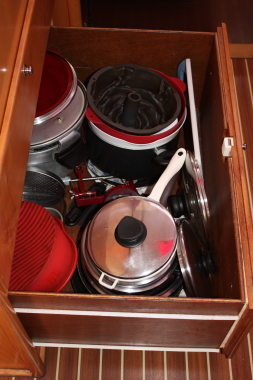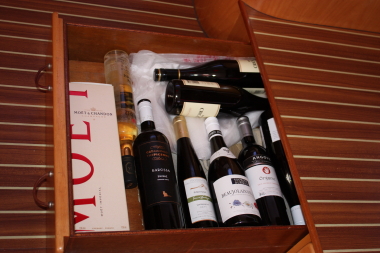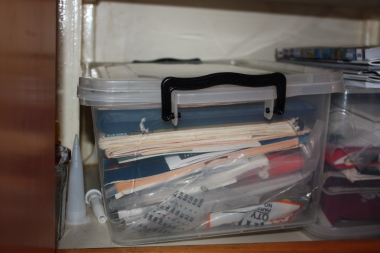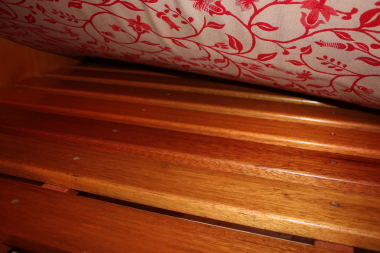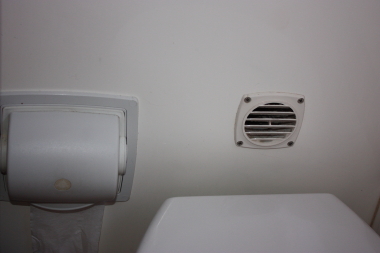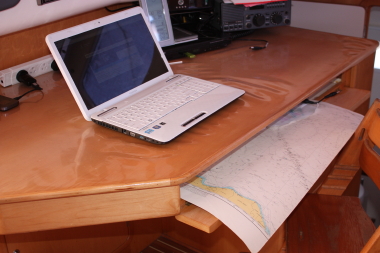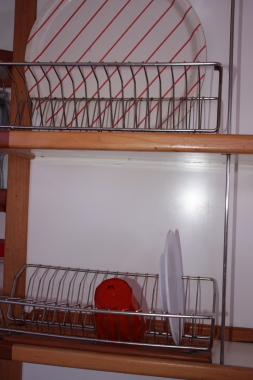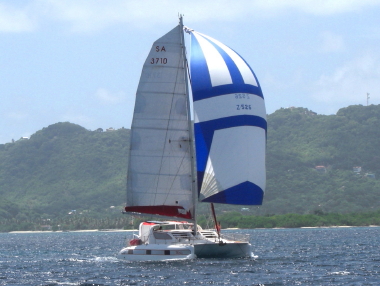We've been asked recently what features Merlin had that most other Deans don't.
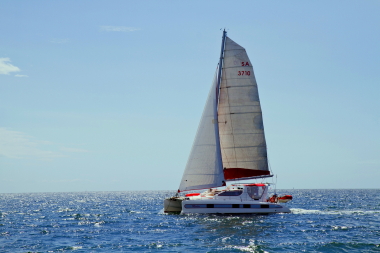 Here is Greg's reply
Here is Greg's reply
Safety gear
- AIS send and receive
- Raymarine lifetag (used by person on watch. If person falls overboard then the Raymarine system sets off an alarm and the chartplotter goes into man overboard mode tracking the route back to the overboard location)
- Sat phone with external aerial (used to get weather charts world wide and email communication when at sea. Much faster and more reliable than the SSB email service. For emergency communication.)
- Full Grab bag under skippers seat
- Backup fully integrated hydraulic autopilot electric pump. We just flick a switch to swap between the pumps which is good in a big sea to give them a break.
- See-me radar detector with alarm and a radar transponder function. (This picks up ships about 30NM away).
Deckgear
- Full Harken deckgear (standard fit out is not all Harken)
- Traveler cars for the genoa so that you can adjust the leech when powered up.
- Harken ball bearing sheaths in the top of the mast for the main and spinnaker halyard. These sails go up and down a lot so reducing friction there made a lot of sense to me.
- Harken batt car system for the main sail.
- Starboard genoa sheet is lead to the port side where the steering position is and the electric winch. This makes single handed tacking possible and is easily controlled
- fully rigged for spinnaker sailing with safety trip.
- Mast rack is about 7 deg which is a lot less than the standard Dean. This makes sail handling easier.
- All ropes go back to the cockpit, so there are no winches on the mast. (makes tacking easier &, can pull someone up the mast using the electric winch at the steering position)
- Quality Spinlock jammers for all cockpit ropes.
- Mast is one size up from the standard enabling less spreaders and no forward jump stay. That with not having winches on the mast results in much easier tacking.
- Flex-o-fold 3 blade props. This gives at least an extra knot of boat speed. I could not sail the world with those hand brakes.
- Main and Genoa are made of carbon twaron laminate material where the strands were laid out based on computer designed stress lines. This has resulted in the sails having maintained exceptional shape and are about 30% lighter.
Electronics
- Top of the range Spectra watermaker. 60L per hour and the automatic version.
- 760w of solar panels 110v to a top quality solar regulator "Outback MX60" (this saves us hours of motor running charging time shown by the low engine hours of 960 each)
- LED lights throughout (saves massive amount of battery power)
- each motor has an extra 210amp Balmar alternator (reduces motor charging time)
- Full diagrams of the electrics of the boat
- Top quality Raymarine autopilot with compass and gyro.
- Separate fishfinder that is also a backup chartplotter.
- VHF radio controller at the skppers station.
- working speed log (we find this useful to work out the current, as the GPS speed doesn't tell us that).
Layout
- larger chart table that fits a chart
- larger saloon seat that fits more people.
- work desks in each hull for the kids to do schoolwork
- Lots of extra storage cupboards
Galley
- Galley up version (ever since this was introduced every subsequent purchaser chose galley up).
- Full size stove
- layout that maximizes the work and cupboard space
- large pot drawer
- 2 very efficient fridge / freezers 65L and 125L in addition to the standard fridge
- plate drying racks above sink which makes washing at sea easier
- extra taps at sink (normal fresh water, charcoal filtered fresh water and sea water tap)
Comfort
- extra large side windows that brings light into the cabins and a connection with the sea
- 8.5kg cloths washing machine and dryer. Plumbed into the engine heated hot water system for hot washes. Uses about 1 1/2 hours of water maker water and 35 amps of power so it is covered by the solar panels on a sunny day.
- Larger saloon seating that is raised to give a view of the horizon when seated.
- Inside and outside tables can be lowered to sleep on.
- More space than the Aero version, this is an Espace version
Extras
- 11,5ft AB aluminum dinghy with a 18HP motor (light to lift yet large so you stay much dryer when going ashore)
- Boom extension to enable dinghy or 18HP motor lifted with main halyard using it's electric winch.
- RST water saving fittings on most taps and showers.
- hands free outside shower.
- screens for outside area to keep bugs out and better privacy when in a marina.
- Two "eye" zip openings in the main forward looking screen, making it easy to open to let the cooling breeze in and to close when it rains.
General
- we have never handed the boat over for someone to charter (the 2006 boat is a charter boat) so we know what the boat has been through and that is has been cared for by ourselves.
- only about 960 hours on each motor
- main toilet is an electric one
- Paper manuals for most items on the boat
- Relevant spares
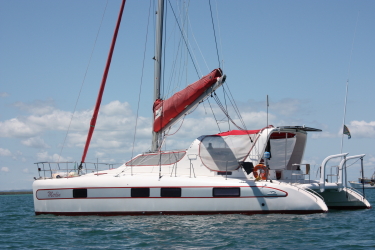
 Admin |
Admin |  Wednesday, November 25, 2015 at 8:17PM
Wednesday, November 25, 2015 at 8:17PM  Here is Greg's reply
Here is Greg's reply



